Advertising today is like background music you can’t turn off. It’s constantly playing, and whether you like it or not, it sticks with you. From the clever billboards you pass on your drive to those ads that seem to follow you across the internet, marketing has a way of slipping into your daily life. So, what’s the magic behind it? How does it get us hooked and steer our behaviour? Spoiler: It’s all about the psychology of advertising.
Get ready to dive into the wild and wacky ways advertising influences our thoughts, tugs at our heartstrings, and nudges our choices.
The psychology of advertising is an art and science that makes you say, “I need that!” when you didn’t know you actually did. It is about knowing exactly what makes you tick: your thoughts, emotions, and behaviours—and then employing the same in building ads that grab your attention, tug at your heartstrings, and make you reach for your wallet.
Think of this as a smart dance between your brain and those billboards, TV commercials, and Social Media ads. It’s why certain colours catch your eye, why some catchy slogans stick in your head, and why you just can’t help falling prey to those “limited time” offers.
In a nutshell, it is that magic which turns any product into your need and every glance into an obsession. Not just selling but creating connections that make you feel seen, understood, and ready to buy.
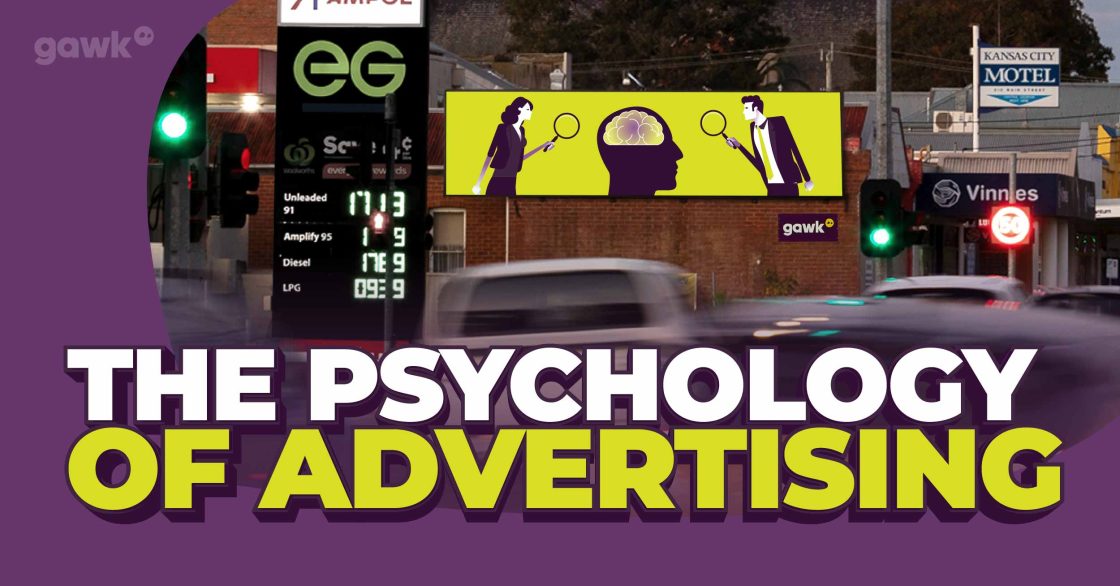
Ever wonder how ads worm their way into your brain and stick there like some catchy jingle?
Here’s some food for thought: Psychology doesn’t belong to therapists and philosophers only. That’s what the ultimate secret weapon looks like in the toolkit of all savvy marketers, making any ad a special temptation. You can imagine it as the behind-the-scenes mastermind orchestrating every billboard, banner, and social media post.
That’s why the billboard flashing a juicy burger has your stomach growling and why you suddenly think about taking a detour to hit the nearest drive thru. Billboard advertising is something of a master class in psychology, tapping into what we’re craving and guiding our buying behaviour. These types of ads turn everyday promotions into nearly irresistible urges that appeal to our emotions and thoughts.
So next time you are driving and you cannot help but see that billboard boasting about a sizzling sale or some must-have gadget, just remember: it’s more than slick marketing at play. It is the psychology of ad games—both subtly leading your decisions and keeping you enthralled.
Let’s look into some of the psychological principles that influence advertising and our buying patterns.

The Zeigarnik Effect is like your brain’s way of keeping tabs on all the stuff you haven’t finished yet. Ever noticed how you remember that cliffhanger episode of your favourite show way better than one that just seemed to tie everything up neatly? That’s the psychology of advertising in action.
Advertisers know exactly how to play with your curiosity. They run teaser campaigns or cliffhanger ads that leave you wanting more. Think of a billboard that grabs your attention but doesn’t tell you the whole story—it’s just enough to make you wonder what’s coming next. Outdoor ads use these tricks all the time, where a single clever billboard sticks in your head long after you’ve passed it, keeping you curious about what happens next.
Cognitive priming is a psychological idea that explains how being exposed to something can affect how we respond to something similar later on. It works by quietly triggering certain connections in our brain, making us more likely to notice, think about, or react to things we’ve already come across. In simple terms, priming gets our minds ready to respond in a certain way without us even being aware of it.
You know how, immediately after watching a heartwarming family scene in a commercial, you suddenly crave a cozy cup of hot chocolate? Well, that’s psychology in action there, that’s cognitive priming. It’s like you’re dropping those little seeds into your brain that eventually germinate into thoughts and actions.
Advertisers know well how to do this. They salt and pepper in cues and images that really nudge you in the right way. Those happy families? They’re not there just to make you smile, but to prime you to associate their product with all things positive. Here’s the neuromarketing playbook: subtly shaping a positive image of a brand without you even noticing.

It’s the ultimate social life hack: give someone a little something upfront, and they’re way more likely to return the favor. In marketing, especially in advertising psychology, this translates to those tempting free samples, trial offers, or irresistible content brands hand out to hook you in.
By offering a taste of the good stuff, advertisers are essentially setting up a little “I scratch your back, you scratch mine” situation. You are literally putting a seed of obligation that one day will bloom into a full-on purchase or action. So the magic is not just about making a quick sale but building trust and turning casual shoppers into loyal fans.
This reciprocity principle works wonders in billboard advertising because it grabs attention with an immediate offer and creates a sense of obligation. The next time you see some billboard flashing a tempting freebie or special offer, remember, it’s not just a flashy ad; it’s actually a clever move to build trust and prompt action.
The Verbatim Effect is kinda like your brain’s version of skimming the details and holding on to the gist. That being the case, if an ad hits you with this cool slogan or some kind of killer message, you’re way more likely to remember the vibe than the nitty-gritty details.
Advertisers get this totally and use such to their advantage. They whip up memorable slogans and punchy key messages that nail the essence of their campaigns. It is all about the psychology of advertising—making sure that core message sticks with you, even if the exact words may not.
This is most important in billboards, where you have literally just seconds to make your statement. So those very smartbillboards with short, punchy messages are playing the Verbatim Effect like a fiddle, to make sure their message stays with you long after you drive past.
Social psychology is the magic sauce that makes Billboard Advertising hard to ignore. It is all about how people think, feel, and behave in social situations, using it to create ads that strike a chord.
Take social proof as an example. Ever seen billboards proudly announcing “Voted #1” or “5 Million Happy Customers”? That’s social proof at work, playing on our natural tendency to follow the crowd.
The implication is clear: “If everybody else loves it, you will too.” Then there’s the bandwagon effect, those billboard messages that practically scream, “Join the Club!” or “Don’t Miss Out!” They play on the fear of missing out (FOMO), making you feel like you’ll miss something amazing if you don’t jump on board. It’s like the billboard says, “Everybody’s doing it; why aren’t you?” FOMO!
Billboards are designed to take full advantage of these principles with big messages placed in great locations.
When your brand’s billboard is repeatedly in the same place, another psychological trick comes into play: the “mere exposure effect.” With this phenomenon people tend to develop positive feelings toward something with repeated exposure, even when they did not really care much about it in the first place.
Our brain perceives familiar things as unobjectionable, and that familiarity gives way to trust and comfort.
In other words, social psychology refers to this as the “familiarity principle,” where people simply trust something with which they are familiar more than something they do not know. It’s the fact that familiarity breeds trust, reliability, and even comfort-all the ingredients for amping your brand.
To this effect, once customers are finally ready to make their purchasing decision, they will most likely end up buying your product or service due to the fact that they always see it. It’s all about building positive associations through continuous exposure to the market.
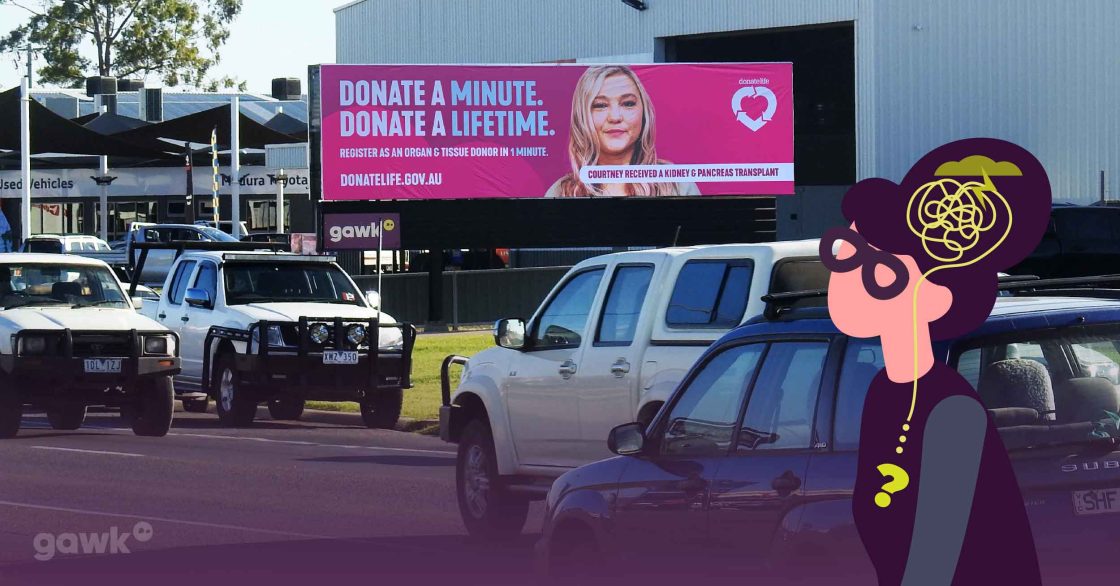
Now, let’s talk colour—the magic ingredient that makes ads pop and puts a spin on your emotions. Colour psychology stipulates the employment of colours to provoke certain emotions and reactions. Marketers know how to use them to their advantage.
• Red: This fiery colour is not just bold—it’s provocative. You see it flashing from any clearance sale and any limited-time offer, because red means one thing: Get eyeballs and incite activity. It makes your heart race, and magically, your wallet opens.
• Blue: If red is your energetic cheerleader, then blue is like the laid-back, trustworthy friend. It’s a colour of reliability, so you see it all over banks and insurance ads. And blue tells you, “Relax—we have this,” making it the perfect hue when you’re considering how to invest your hard-earned cash.
• Green: Green is to make one feel good and keep one chill. It’s absolutely all over eco-friendly products and wellness brands, screaming with words, “You are doing awesome things to yourself and the planet.” Green exudes peace and well-being; it soothes, refreshes, and makes you feel at ease.
• Yellow: Yellow is like your shot of sunshine and cheer. Tailored with allure to engage your attention, thus spreading joy, it pops up in everything from playful toys to sunny vacation spots. Yellow conveys feelings of happiness and optimism, lightening the mood like a shot of summer.
Next time you’re driving down the highway or flipping through a magazine, take a good look at those colours. Advertisers are using colour psychology to ensure that their message sticks and hits all of the right emotional notes—perfectly matching the vibe of their brand. It’s the Psychology of Advertising at its finest!
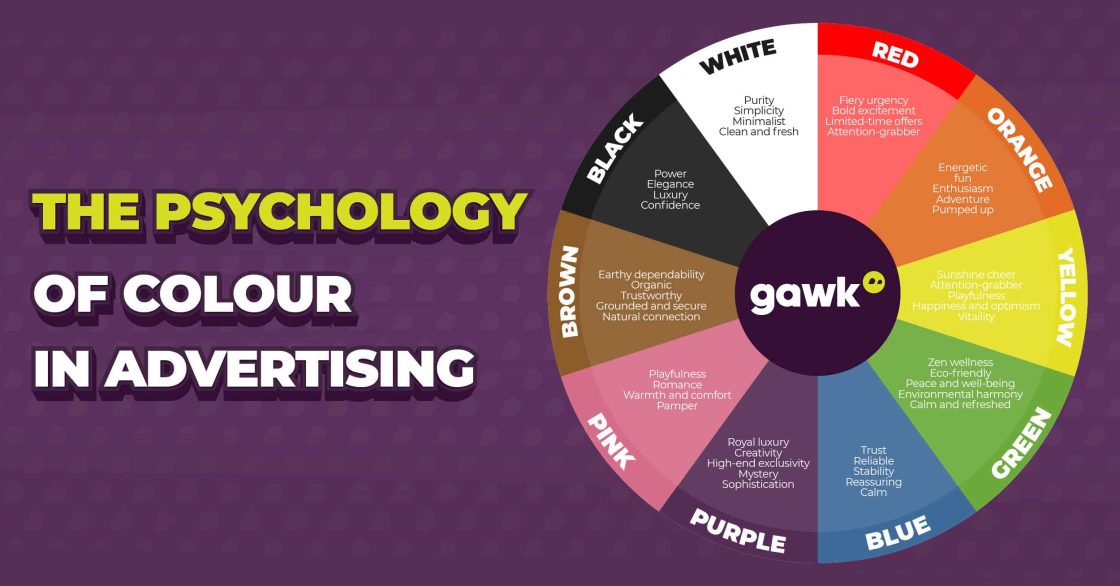
Emotions are just the glue that holds everything in advertising together. They are what really drive our choices and lead our activities. Smart advertisers will know how to tap into these feelings, be they joy, fear, nostalgia, or empathy, to forge powerful relationships with us.
Think of emotional advertising as the master of making you feel something real. It’s not just about slapping a pretty picture on an ad but creating a story that goes straight to your heart. Whether it’s a tear-jerker or a real burst of joy, these ads make sure their message is profoundly heard and felt.
Storytelling is their favourite trick. They spin narratives that ring with personal experiences, fixing them in your memory and making them impossible to ignore. So, next time an ad makes you smile, cry, or reminisce about the good old days, know that the psychology of advertising is playing with your emotions enough to leave a mark that sticks.
Neuromarketing subtly shapes a positive perception of a brand without you even realising it. The more exposure you have to certain ads, the more likely you are to develop a subconscious preference for that brand. Studies using advanced techniques like brain scans and biometric data confirm this—the right ad can prime your brain to respond in ways you aren’t even aware of.
Neuromarketing is more or less like advertising’s genius cousin. It fuses neuroscience and marketing together to figure out precisely how your noggin reacts to the different ad tactics within. Authors in this leading-edge field go into extensive research over the inner details of the brain by using tools such as brain scans and biometric data, aiming to crack the code on consumer behaviour.
Basically, neuromarketing is about unearthing the sneaky subconscious processes that shape your decisions. By getting into the real nitty-gritty of how your brain ticks, advertisers could build campaigns that hit all the right spots. It’s not just about making ads that work; it’s about making ads that work on a whole different level, with an order of brainy insights into the psychological tricks at play.
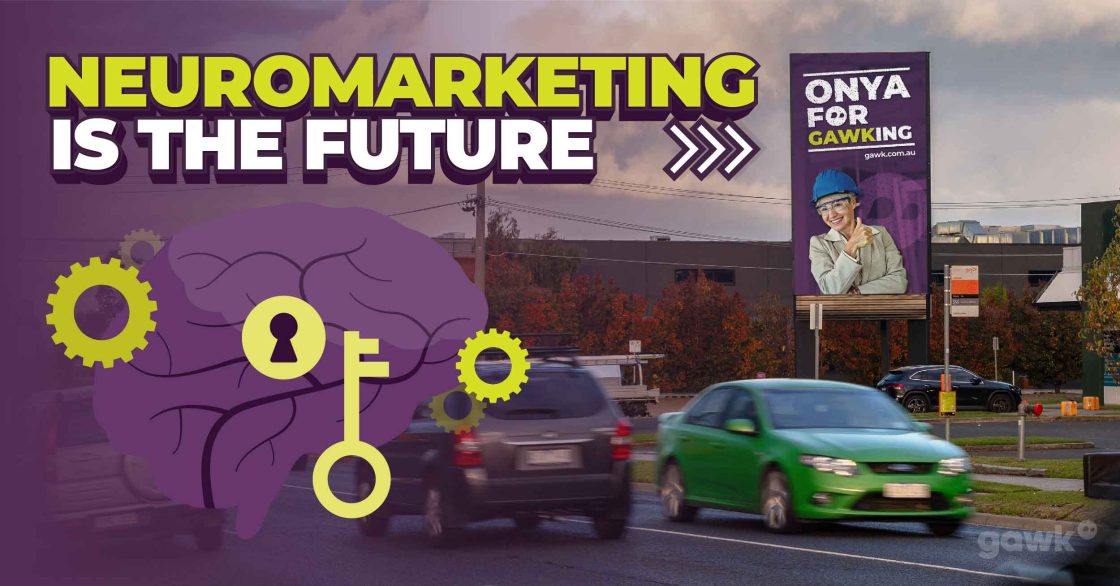
Let’s get into the psychology of advertising and go through exactly how advertisers use brainy tricks to get your attention and fall in love with their products:
Ever fallen prey to the “Got Milk?” ad campaign? It’s a real master class on the Zeigarnik Effect. Dropping that saucy question without spilling the beans got every single person talking about milk and what the big deal was. You are telling them, in essence, “You will be curious until we give you the whole scoop.”
Fitness brands, however, are probably the most initial cognitive primers. They plaster pictures of chiselled, grinning fitness enthusiasts using their products, subtly saying, “Want to look this good? Buy our stuff!” It’s like a visual magic trick to the brain, making you think that just by giving their brand a try, you will achieve peak awesomeness.
Cosmetic companies know the game with free samples. Those small freebies are given away not only to get people hooked but also to create the sneaky sense of “Hey, thanks for the freebie—now you owe me a purchase!” If one may say it their way, then it would be something like, “Here’s a taste; now, how about that full buy?”
Nike’s “Just Do It” is the rock star of the Verbatim Effect: short, punchy, totally unforgettable, sticky like glue, even if you can’t remember details from the ad. It just stays there, ready to pop up and urge you on whenever you feel like going for it.
The Verbatim Effect came up with the witty response: “Onya For Gawking.” Here’s the theory behind Onya: We took the classic Aussie phrase “Good On Ya,” chopped it to “Onya” to keep it real, and then threw in a clever play on words with “Gawking”—a nod to both our name and the act of staring at our billboards.
By weaving in a few bits of familiar slang with our brand name, we came up with a slogan that’s short, snappy, and frankly impossible to forget. It’s all about making sure “Onya For Gawking” sticks in your mind and keeps Gawk Outdoor top of mind for regional Victorians.
So the next time an ad engages you and does not let you go, be certain some neat psychological tricks are at work to ensure you remember and come back for more!
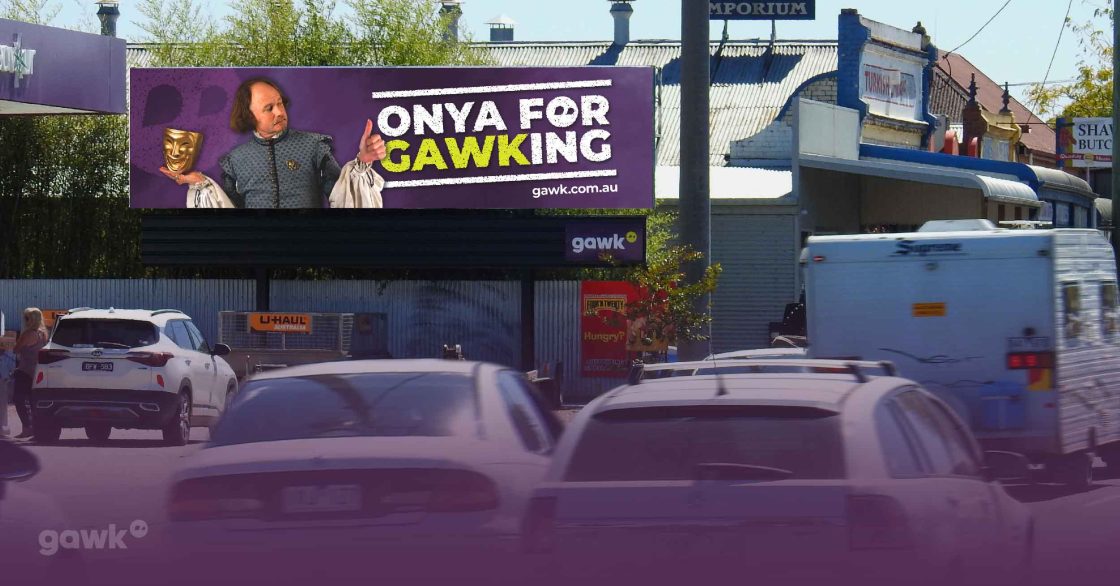
Grasping advertising psychology serves as a magic weapon at your side in making those killer marketing campaigns. Advertisers can really whip up messages that hit home: Zeigarnik Effect, cognitive priming, the Reciprocity Principle, and the Verbatim Effect.
Add a splash of colour psychology, some emotional appeal, and a dash of neuromarketing, and there you have it: a recipe for ads to really pack a wallop. It’s the dance between human behaviour and advertising where the magic happens—making marketing both an art and a science.
Next time you’re cooking up some marketing campaigns, get savvy with the psychology of advertising and just make it impossible to resist—leaving your audience thinking, “Wow, they really get me!